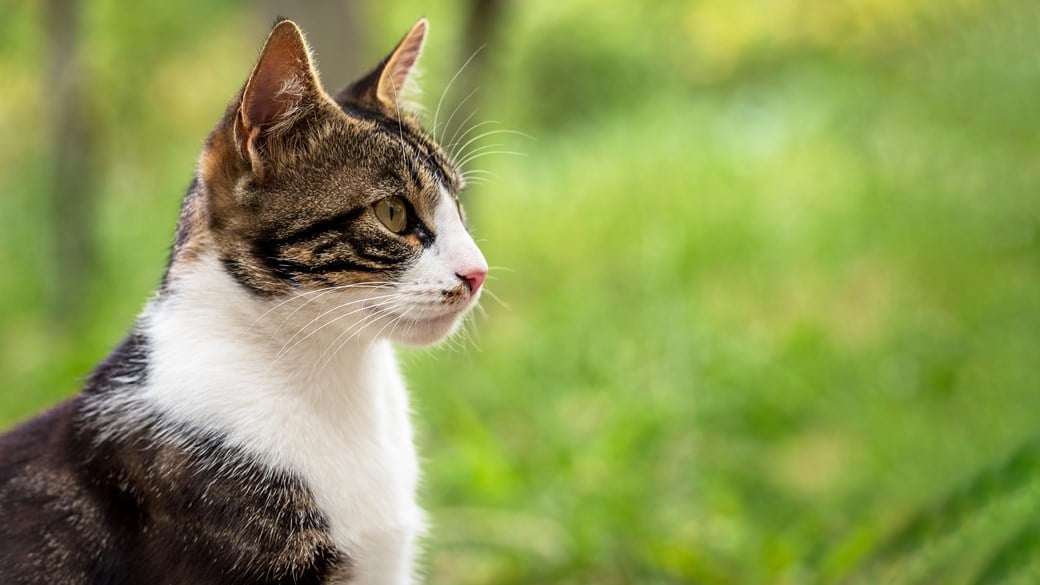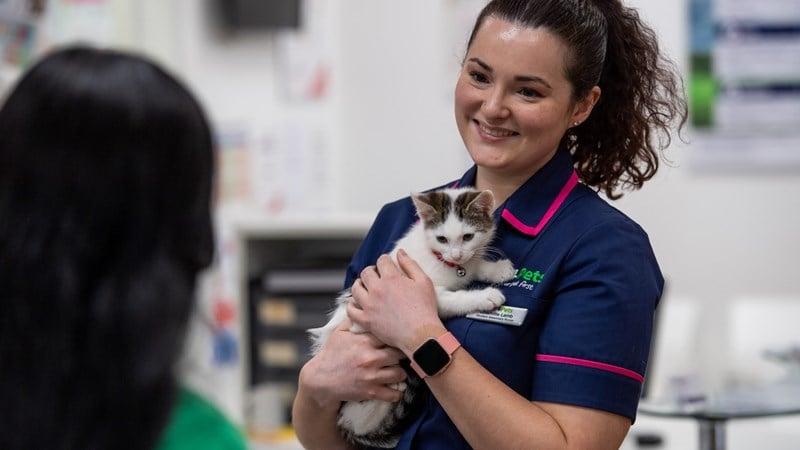
Roundworms in Cats
Roundworms are very common in the UK, and this means that your cat can be at risk of picking up worms whenever you head outside.
It is estimated that a quarter of cats in the UK are currently infected! Picked up from contaminated faeces, or even from the soil, roundworms can cause diarrhoea and poor growth, and also have human health risks.
Cat roundworms are brownish-yellow, round-bodied worms, and can get up to 10cm long! These worms spend most of their life within the gut of cats, feeding on intestinal contents.
Roundworms in cats reproduce by laying eggs within the intestine – these eggs are tiny, and aren’t visible to the naked eye. These eggs are passed out with faeces, mature for up to a month, and then become infectious. Cats then ingest these infectious eggs, which hatch into larvae. Importantly, larval roundworms can travel out of the gut to a wider range of tissues, including multiple organs such as the liver and lungs, skeletal muscle and the gut wall, where they may form cysts. This allows cats to maintain a level of infection, and females can pass on infections to their kittens via the placenta or milk.
Sadly, toxocara can also infect humans, and while usually harmless in adults, can cause serious damage to children’s eyesight.
Read more about toxocara
A roundworm infection, also called toxocariasis, can be picked up by a cat in one of four ways:
- By eating infectious eggs, in contaminated soil or faeces
- By eating another infected animal, which can include rats or birds – this is the most common route of infection for cats who like to hunt
- Kittens can get roundworms through their mother’s milk
- Kittens can be born infected if their mother is infected
With so many sources of infection, and a high prevalence of toxocara infection in cats in the UK, roundworms are a risk for all cats.
In a healthy, adult cat there may be no outward signs of a roundworm infestation beyond visible adult worms in the faeces or vomit. However, in severe infestation, or in cats that are very young or have a poor immune system, you may also see:
- A pot belly
- Diarrhoea
- Weight loss, or poor growth
- Poor coat quality
Sadly, a heavy infestation in a young kitten can even be enough to kill.
If your cat is experiencing any of these signs and you suspect that they might have worms then you should make an appointment with your local Vets4Pets as soon as possible.
Thankfully, although you can’t 100% stop your cat being exposed to roundworms, there are lots of options for preventing an infestation developing. Worming treatments can come in the form of tablets or spot-ons, and often manage a range of parasites including roundworms.
The best parasite protocol for your cat will depend on you, your cat, your lifestyle and even the season, and your vet can help you decide which regime works best for you. However you choose to manage worms in your cat, make sure to speak to a vet about the best anti-parasitics on offer, as many over the counter treatments have poor efficacy.
Read more about worming your catIf you think your cat might have a roundworm infection, the best thing to do is to go to your vet. They can do a full physical examination, and check your cat over from nose to tail! If there is a risk your cat may have worms, your vet will prescribe a worming treatment plan suitable for your pet, which should eliminate the worms. They can also help you plan a worm prevention plan going forward too, to make sure your cat stays protected.
If there is any doubt, your vet may recommend a faecal test. This will look for evidence of worms, such as eggs, and may also look for bacteria within the faeces.
Book an appointmentSadly, humans can also become infected with toxocara, and this includes toxocara found in dogs and in cats. Infection is actually not uncommon – one study estimated that over 13% of the population of the USA had antibodies to toxocara! In the UK the incidence is lower, about 2%, but this is still one in fifty of us!
Many people who are infected with toxocara roundworms show no signs at all. However, some people, especially those who are young, or have a poor immune system, can develop problems as the larvae can migrate to the organs and the eyes. This can cause a range of signs depending on the body systems affected, however if an eye is affected (a condition called ocular larval migrans) a possible outcome is blindness.
Advice to protect you and your family’s health:
- Make sure your pets are kept up-to-date with their worming treatments
- Promote handwashing after playing with pets, or playing outside
- Clean up after your pet as quickly and frequently as possible – as Toxocara roundworm larvae take time to mature in faeces, fresh faeces is not a risk for human infection
- Teach children it can be dangerous to eat soil
- Cover sandpits when not in use – pets, especially cats, and wildlife can use sandpits as bathrooms, making them hotbeds for infection.
Health Plans to keep your cat healthy
At Vets4Pets we offer a range of Health Plans that make essential routine treatments more affordable. You'll save money on things like annual vaccinations, flea and worm treatment and routine health check-ups.

Cat Advice
Read more of our expert cat advice to keep your cat happy and healthy.
